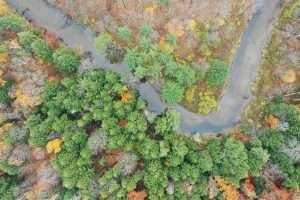New Project To Monitor Atlantic Salmon in Boquet River


 The New York State Department of Environmental Conservation (DEC) has begun a collaborative project with the U.S. Fish and Wildlife Service (USFWS) and the town of Willsboro, in Essex County, to improve monitoring of spawning Atlantic salmon in the Boquet River.
The New York State Department of Environmental Conservation (DEC) has begun a collaborative project with the U.S. Fish and Wildlife Service (USFWS) and the town of Willsboro, in Essex County, to improve monitoring of spawning Atlantic salmon in the Boquet River.
Much of the Boquet River salmon fishery occurs below the dam and fishway in Willsboro. DEC and partners hope to evaluate various management strategies to improve the Atlantic salmon population.
Emptying into Lake Champlain, New York’s Boquet, Saranac, and Ausable rivers begin in the Adirondack Mountains and are among the 10 New York and Vermont spawning tributaries to Lake Champlain.
Although the same species as the sea-run Atlantic salmon, this population is landlocked in freshwater due to glaciation.
Unlike Pacific salmon, which spawn once before completing their lifecycle, mature landlocked and sea-run Atlantic salmon may survive several spawning runs.

 In August 2025, DEC and USFWS are planning to install a new resistance board weir on the Boquet River downstream of the cascades in Willsboro. The weir acts as an upstream migration barrier, funneling the salmon into a trap.
In August 2025, DEC and USFWS are planning to install a new resistance board weir on the Boquet River downstream of the cascades in Willsboro. The weir acts as an upstream migration barrier, funneling the salmon into a trap.
This weir will replace the hoop net trapping previously used to collect salmon during the fall spawning run. Biologists are expected to monitor the weir daily.
Each captured salmon will be tallied (providing a run size estimate), measured, and have a genetic sample (fin clip) taken before being released upstream of the weir.
The genetic samples will allow biologists to determine the origin of each fish and evaluate the success of different stocking strategies.
Atlantic salmon in the Lake Champlain basin are managed by the Lake Champlain Fish and Wildlife Management Cooperative through the Lake Champlain Fisheries Strategic Plan. Goals of the Strategic Plan include maintaining a healthy Atlantic salmon fishery in Lake Champlain and its tributaries while striving to increase levels of natural reproduction in major tributaries.
Currently, salmon fry and smolts are both stocked in the Boquet River watershed. An assessment of the Atlantic salmon fishery in the river is needed to inform future stocking decisions and to obtain population size estimates.
Large rivers like the Boquet are difficult to sample due to their size and variable flows. Resistance board weirs, which can adjust to shifting flows, are effective gear for salmonid monitoring.
The Boquet River weir will be installed annually from September through November for at least the next five years. The weir will be removed every year once the spawning run is over.
Read more about salmon in New York or read more about the Boquet River.
Photos, from above: Aerial view of intact forests along the North Branch of the Boquet River on the Ben Wever Farm property (provided by Adirondack Land Trust/Becca Halter); anda map of Boquet River reclaimed salmon habitat after the 2015 Saw Mill Dam removal.
Source link




